Abstract
Studies of pulse rate and blood pressure responses to graded intravenous infusions of noradrenaline and dopamine were performed on five patients with Parkinson's disease, five with the Shy-Drager syndrome and seven healthy subject. Cardiovascular reflex responses to standing and to the Valsalva manoeuvre were found to be preserved in all patients with Parkinson's disease but to be grossly defective or absent in all with the Shy-Drager syndrome. Each subject received separate intravenous infusions of L-noradrenaline and dopamine, delivered at increasing rates, until a 30% rise in systolic blood pressure was achieved. Heart rate decreased during pressor responses to noradrenaline in control subjects and patients with Parkinson's disease, but increased in those with the Shy-Drager syndrome. Heart rate increased during pressor responses to dopamine in all subjects. Compared to control subjects supersensitivity to noradrenaline was observed both in patients with Parkinson's disease and, to a greater extent, in those with the Shy-Drager syndrome. Subsensitivity to dopamine was observed in patients with Parkinson's disease, but supersensitivity in those with the Shy-Drager syndrome.
Full text
PDF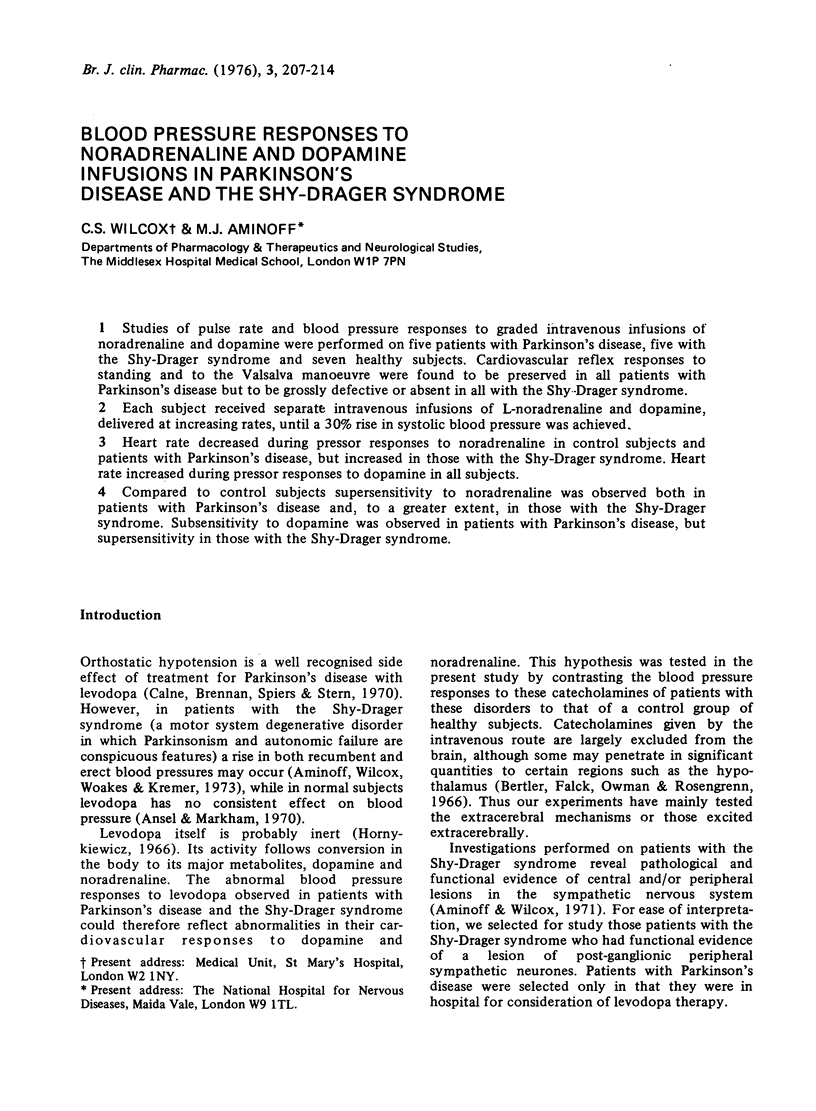
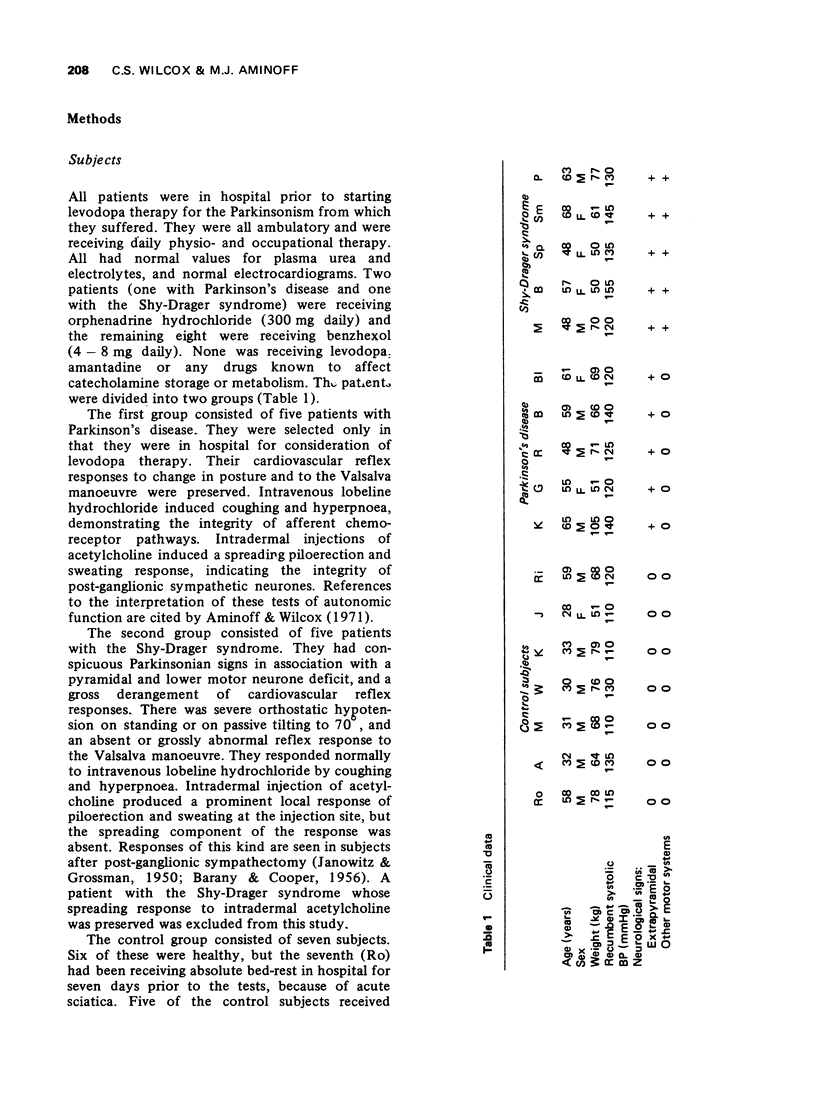
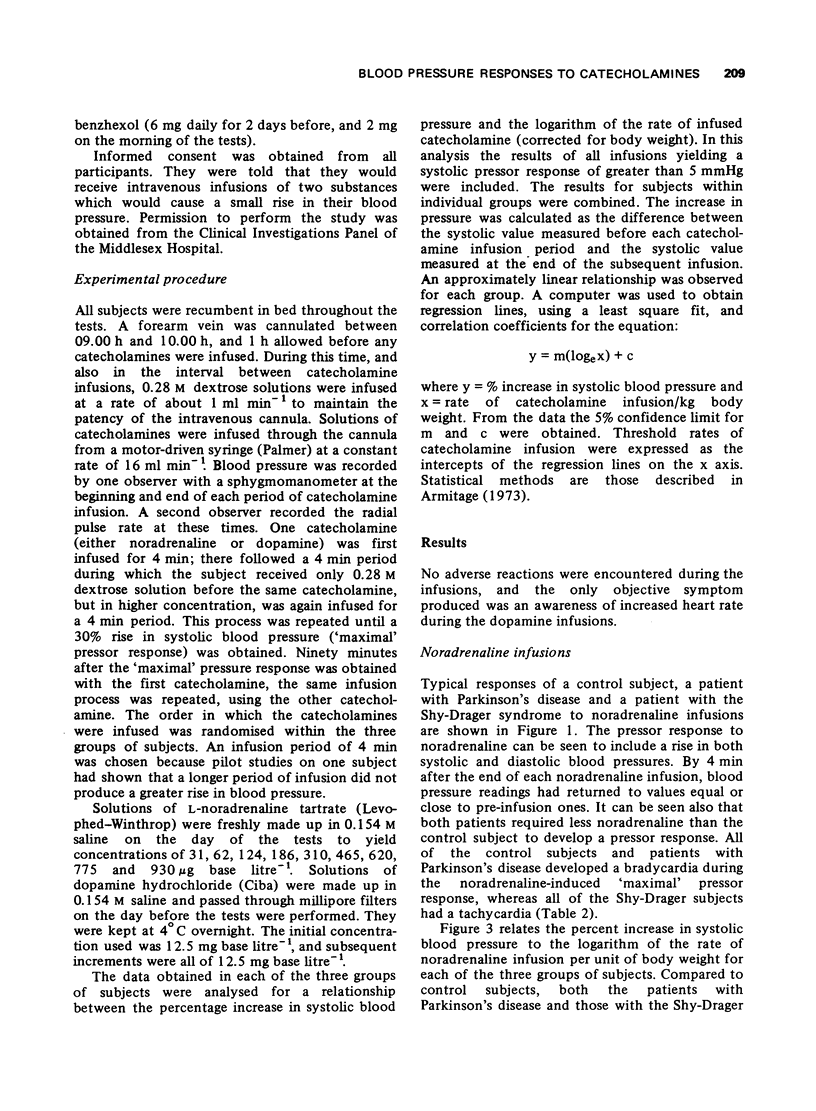
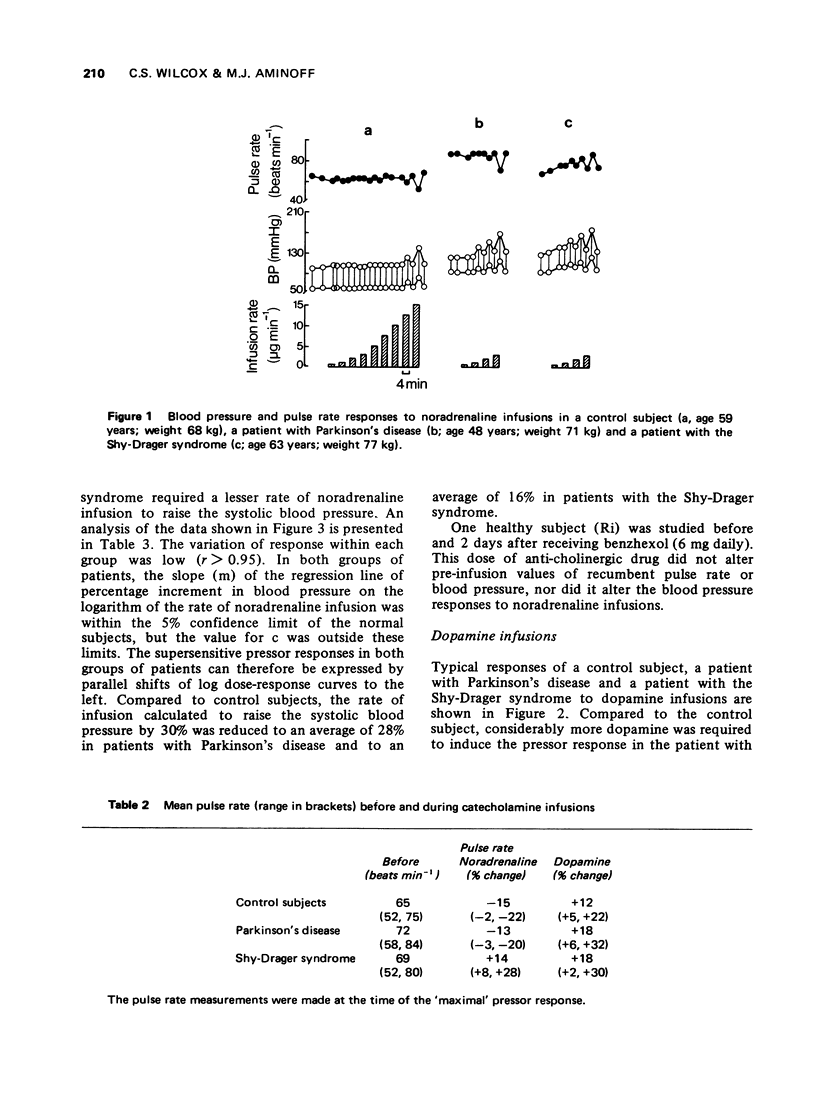
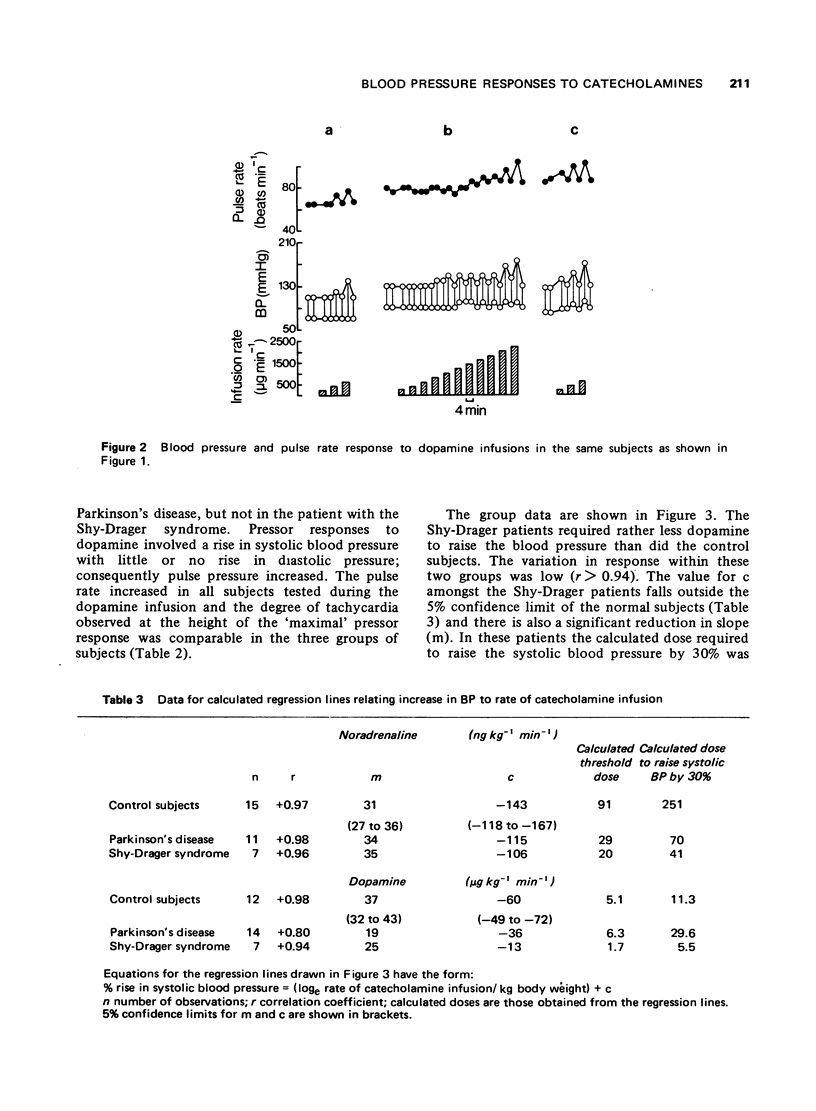
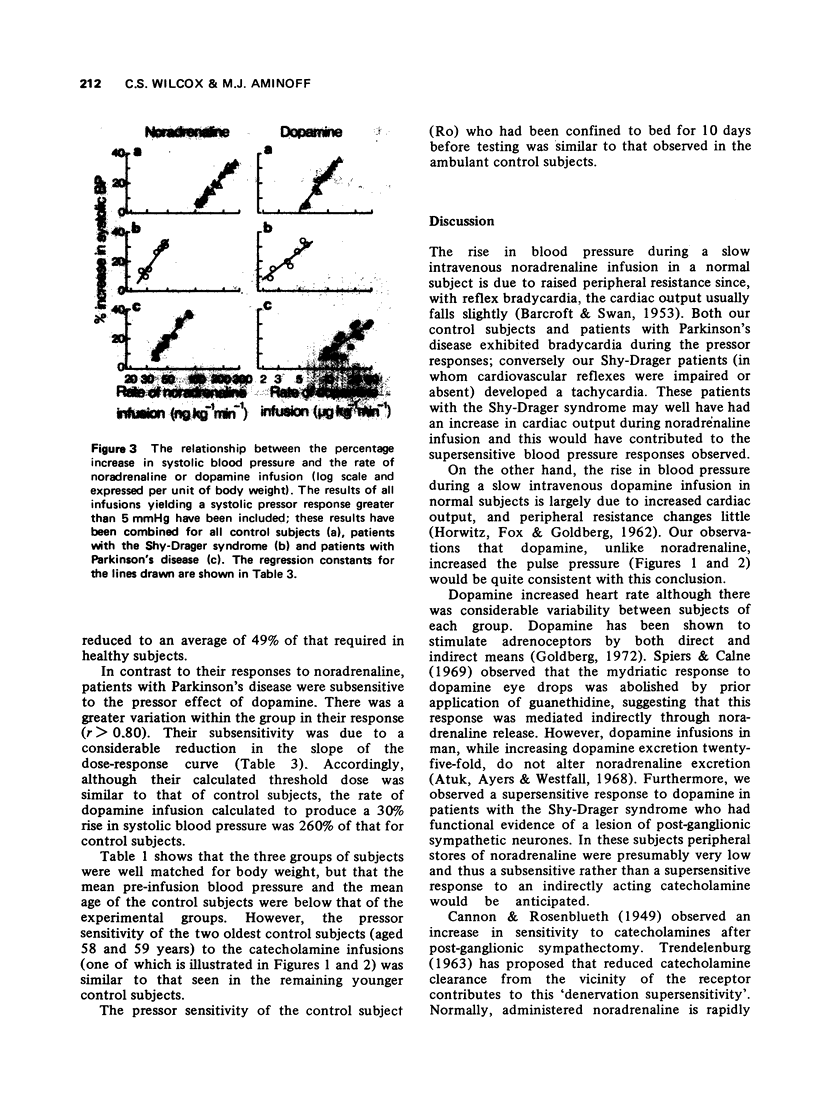
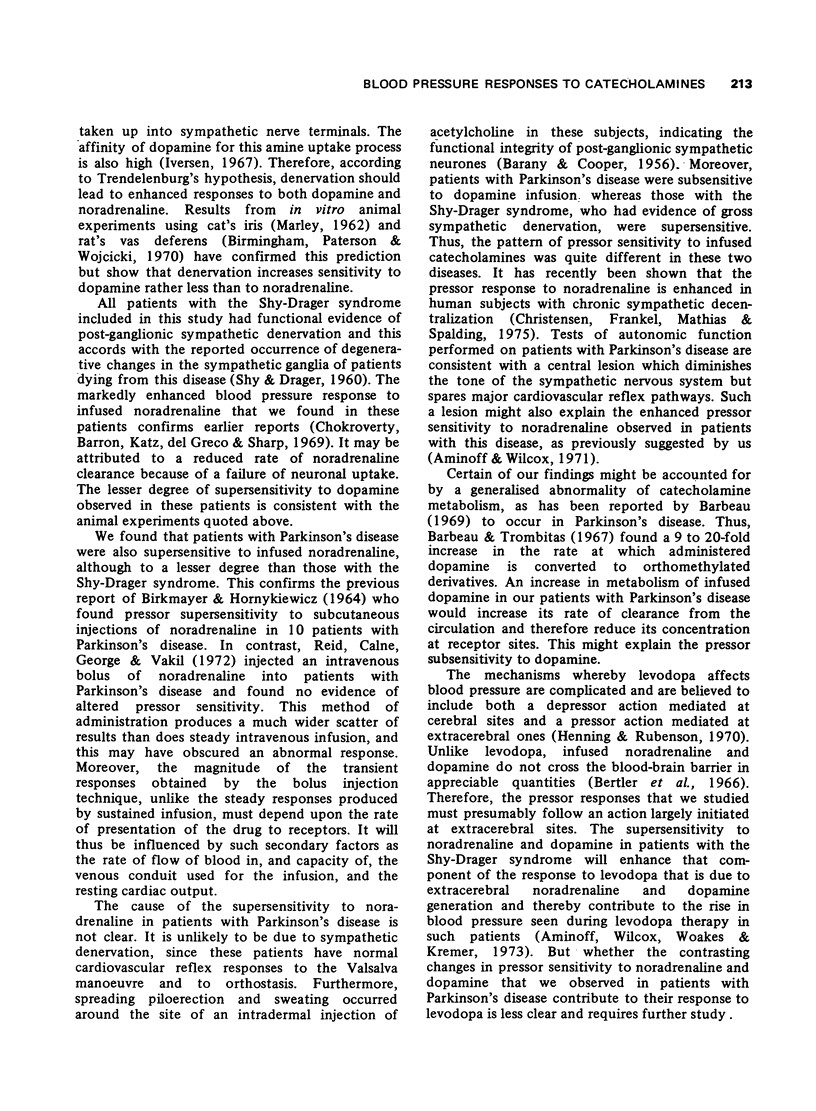
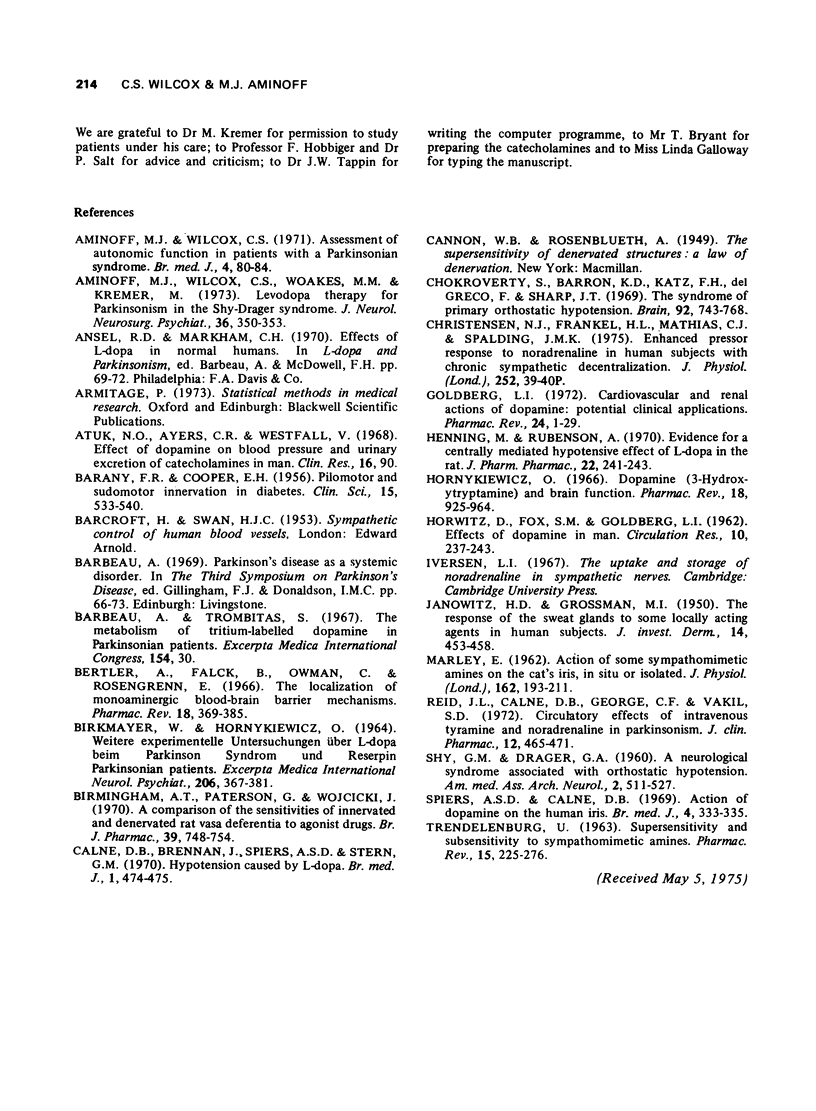
Selected References
These references are in PubMed. This may not be the complete list of references from this article.
- Aminoff M. J., Wilcox C. S. Assessment of autonomic function in patients with a Parkinsonian syndrome. Br Med J. 1971 Oct 9;4(5779):80–84. doi: 10.1136/bmj.4.5779.80. [DOI] [PMC free article] [PubMed] [Google Scholar]
- Aminoff M. J., Wilcox C. S., Woakes M. M., Kremer M. Levodopa therapy for Parkinsonism in the Shy-Drager syndrome. J Neurol Neurosurg Psychiatry. 1973 Jun;36(3):350–353. doi: 10.1136/jnnp.36.3.350. [DOI] [PMC free article] [PubMed] [Google Scholar]
- BARANY F. R., COOPER E. H. Pilomotor and sudomotor innervation in diabetes. Clin Sci. 1956 Nov;15(4):533–540. [PubMed] [Google Scholar]
- BIRKMAYER W., HORNYKIEWICZ O. WEITERE EXPERIMENTELLE UNTERSUCHUNGEN UEBER L-DOPA BEIM PARKINSON-SYNDROM UND RESERPIN-PARKINSONISMUS. Arch Psychiatr Nervenkr. 1964 Dec 2;206:367–381. doi: 10.1007/BF00341704. [DOI] [PubMed] [Google Scholar]
- Bertler A., Falck B., Owman C., Rosengrenn E. The localization of monoaminergic blood-brain barrier mechanisms. Pharmacol Rev. 1966 Mar;18(1):369–385. [PubMed] [Google Scholar]
- Birmingham A. T., Paterson G., Wójcicki J. A comparison of the sensitivities of innervated and denervated rat vasa deferentia to agonist drugs. Br J Pharmacol. 1970 Aug;39(4):748–754. doi: 10.1111/j.1476-5381.1970.tb09901.x. [DOI] [PMC free article] [PubMed] [Google Scholar]
- Chokroverty S., Barron K. D., Katz F. H., Del Greco F., Sharp J. T. The syndrome of primary orthostatic hypotension. Brain. 1969;92(4):743–768. doi: 10.1093/brain/92.4.743. [DOI] [PubMed] [Google Scholar]
- Christensen N. J., Frankel H. L., Mathias C. J., Spalding J. M. Proceedings: Enhanced pressor response to noradrenaline in human subjects with chronic sympathetic decentralization. J Physiol. 1975 Nov;252(2):39P–40P. [PubMed] [Google Scholar]
- Goldberg L. I. Cardiovascular and renal actions of dopamine: potential clinical applications. Pharmacol Rev. 1972 Mar;24(1):1–29. [PubMed] [Google Scholar]
- HORWITZ D., FOX SM 3. D., GOLDBERG L. I. Effects of Dopamine in man. Circ Res. 1962 Feb;10:237–243. doi: 10.1161/01.res.10.2.237. [DOI] [PubMed] [Google Scholar]
- Henning M., Rubenson A. Evidence for a centrally mediated hypotensive effect of L-dopa in the rat. J Pharm Pharmacol. 1970 Mar;22(3):241–243. doi: 10.1111/j.2042-7158.1970.tb08510.x. [DOI] [PubMed] [Google Scholar]
- Hornykiewicz O. Dopamine (3-hydroxytyramine) and brain function. Pharmacol Rev. 1966 Jun;18(2):925–964. [PubMed] [Google Scholar]
- JANOWITZ H. D., GROSSMAN M. I. The response of the sweat glands to some locally acting agents in human subjects. J Invest Dermatol. 1950 Jun;14(6):453–458. doi: 10.1038/jid.1950.56. [DOI] [PubMed] [Google Scholar]
- MARLEY E. Action of some sympathomimetic amines on the cat's iris, in situ or isolated. J Physiol. 1962 Jul;162:193–211. doi: 10.1113/jphysiol.1962.sp006926. [DOI] [PMC free article] [PubMed] [Google Scholar]
- SHY G. M., DRAGER G. A. A neurological syndrome associated with orthostatic hypotension: a clinical-pathologic study. Arch Neurol. 1960 May;2:511–527. doi: 10.1001/archneur.1960.03840110025004. [DOI] [PubMed] [Google Scholar]
- Spiers A. S., Calne D. B. Action of dopamine on the human iris. Br Med J. 1969 Nov 8;4(5679):333–335. doi: 10.1136/bmj.4.5679.333. [DOI] [PMC free article] [PubMed] [Google Scholar]
- TRENDELENBURG U. Supersensitivity and subsensitivity to sympathomimetic amines. Pharmacol Rev. 1963 Jun;15:225–276. [PubMed] [Google Scholar]


